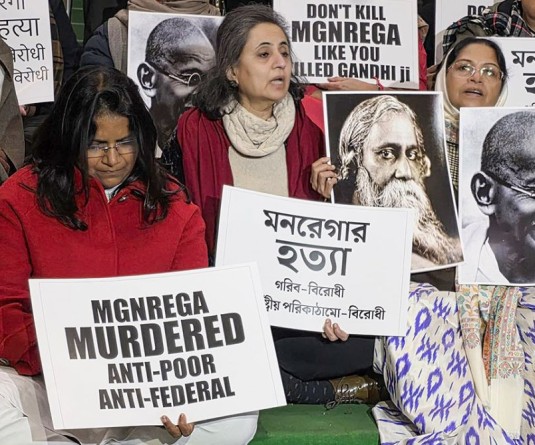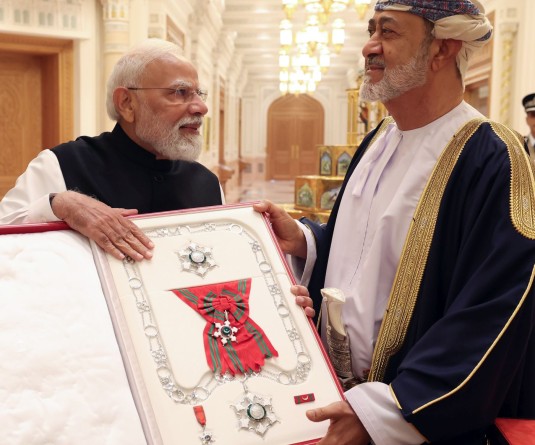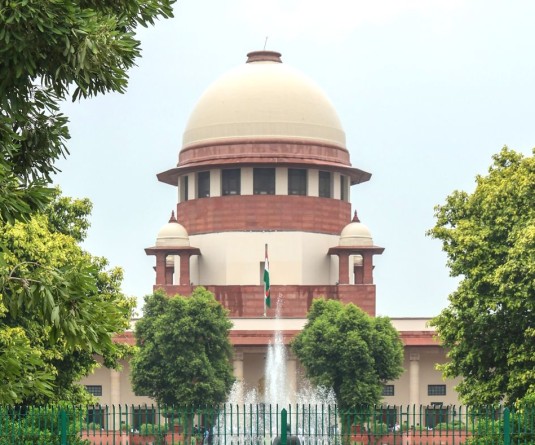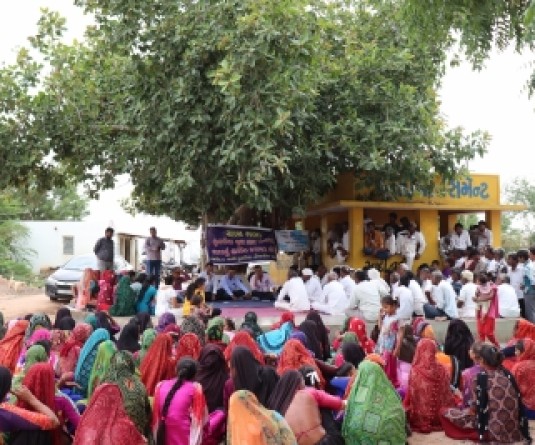Russian President Vladimir Putin, Indian Prime Minister Narendra Modi and Chinese President Xi Jinping share a moment during their meeting on the sidelines of the Shanghai Cooperation Organisation (SCO) summit in Tianjin, September 1. (IANS Photo)
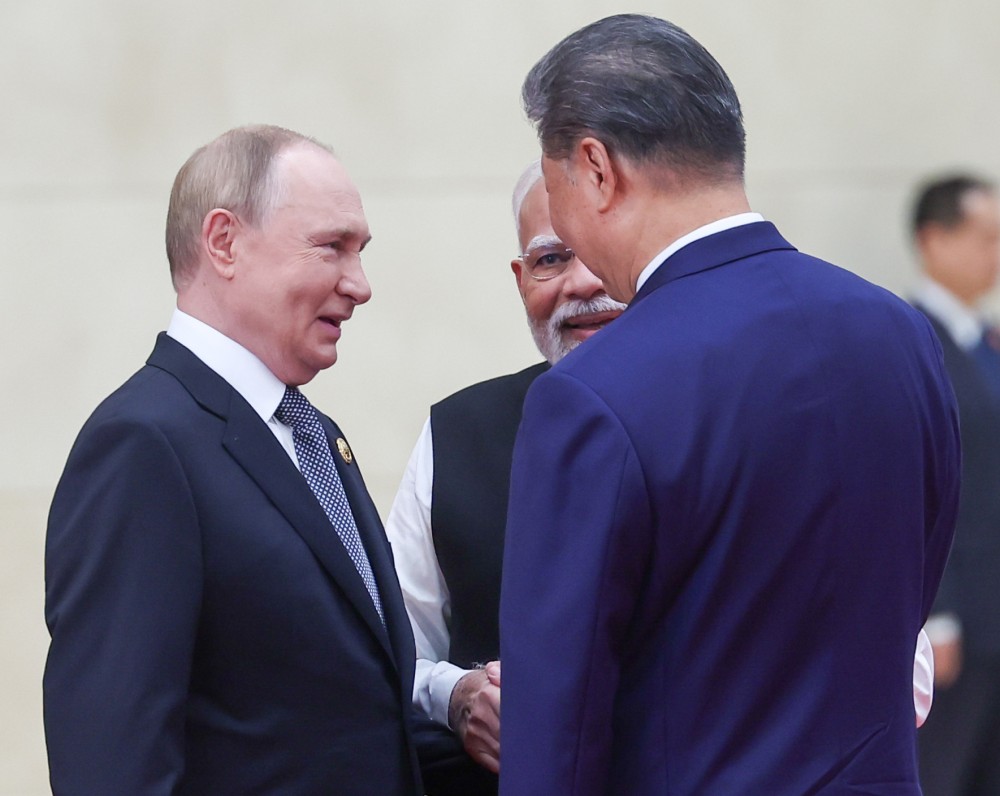
Tianjin, September 1 (MExN): Prime Minister Narendra Modi met Russian President Vladimir Putin and Chinese President Xi Jinping on the second day of the Shanghai Cooperation Organisation (SCO) summit in Tianjin, a rare three-way encounter that showcased India’s evolving foreign policy amid strained ties with the United States.
The Associated Press reported that Modi and Putin “affirmed their special and privileged strategic partnership” during bilateral talks on the sidelines, even as Washington imposed 50 percent tariffs on Indian goods in retaliation for New Delhi’s continued imports of discounted Russian oil. AP quoted Modi as telling Putin that India “values its trusted friendship with Russia” and that cooperation in energy and regional stability remained “a cornerstone of our ties.”
Putin, for his part, said according to AP that “India is a reliable and friendly ally,” adding that Moscow would “stand with New Delhi in all circumstances.” Their exchange, in full view of international media, was interpreted as a deliberate message that U.S. economic pressure has not altered India’s calculations.
Reuters reported that Xi used his opening address to push for “a new global security and economic order” that rejects “Cold War mentalities” and reflects “the aspirations of the Global South.” Standing alongside Modi and Putin at the plenary, Xi said the SCO should “serve as a platform for fairness and justice in global governance.”
But Reuters also noted that Modi drew his own line, presenting India’s SCO agenda around “security, connectivity and opportunity.” According to the news agency, Modi told the gathering: “Security must be uncompromising. Connectivity must be based on trust, not coercion. Opportunity must be shared by all.” Analysts saw this as a subtle contrast with China’s Belt and Road Initiative, which India has long criticized for debt risks.
Signals to Washington
The Wall Street Journal observed that the optics of Modi appearing between Xi and Putin “amounted to a collective message to Washington” at a time when U.S. President Donald Trump has escalated tariffs on both China and India. The paper said the trio’s pledge of cooperation was “a direct rebuke to U.S. trade and security policies.”
The sharper edge to this confrontation came directly from Washington. On Monday, Trump again targeted India over tariffs and trade, calling the relationship a “one-sided disaster” in a post on Truth Social. “What few people understand is that we do very little business with India, but they do a tremendous amount of business with us,” he wrote, accusing New Delhi of historically imposing the “highest tariffs of any country.” He also criticized India’s energy and defense purchases from Russia, declaring that “India buys most of its oil and military products from Russia, very little from the U.S.” According to IANS, Trump claimed that India had “offered to cut their tariffs to nothing, but it’s getting late.”
Indian officials have rejected those accusations, calling the imposition of U.S. tariffs “unfair and unjustified.” The remarks came on the very day Modi appeared with Xi and Putin in Tianjin, underscoring the growing tension between Washington and New Delhi.
Warmth with Russia, caution with China
Reuters correspondents described the Modi-Putin encounter as unusually warm, noting that the Indian leader addressed Putin as “dear friend” and walked into the venue alongside him. Modi was also photographed embracing Putin after their talks. The agency said this display “underlined how India values Russian ties despite Western attempts to isolate Moscow.”
By contrast, Modi’s engagement with Xi was more measured. Reuters reported that both leaders “agreed that India and China are partners, not rivals,” with Modi noting that an “atmosphere of peace and stability” now prevailed along the disputed Himalayan frontier. This marked the first such acknowledgment since the violent clashes in 2020. Analysts said the meeting suggested a thaw, but not a reset, in Sino-Indian relations.
The Associated Press pointed out that for India, the SCO summit carries pressing domestic stakes. With exporters reeling under U.S. tariffs, closer energy and trade ties with Russia offer a vital cushion. AP noted that “deepening cooperation with Moscow shields India’s energy security” at a time when global oil prices remain volatile.
The Wall Street Journal noted that India’s posture in Tianjin reflected “a reassertion of non-alignment in modern form.” By attending the summit and engaging both Xi and Putin, while facing open criticism from Trump, India was “signaling that it cannot be boxed into one camp.”
India’s stakes
India’s challenge now is to turn symbolism into substance. As AP observed, U.S. tariffs remain a looming burden, but deeper trade with Russia and participation in SCO-linked initiatives may provide partial relief. Reuters stressed that India’s engagement with China, though limited, “reduces the immediate risk of confrontation” while allowing New Delhi to keep its focus on domestic economic growth.
For Washington, the image of Modi standing between Xi and Putin is likely to sharpen debates about India’s reliability as a strategic partner. Yet, as the Wall Street Journal concluded, “New Delhi is not drifting away from the United States—it is showing that its path is independent.”


